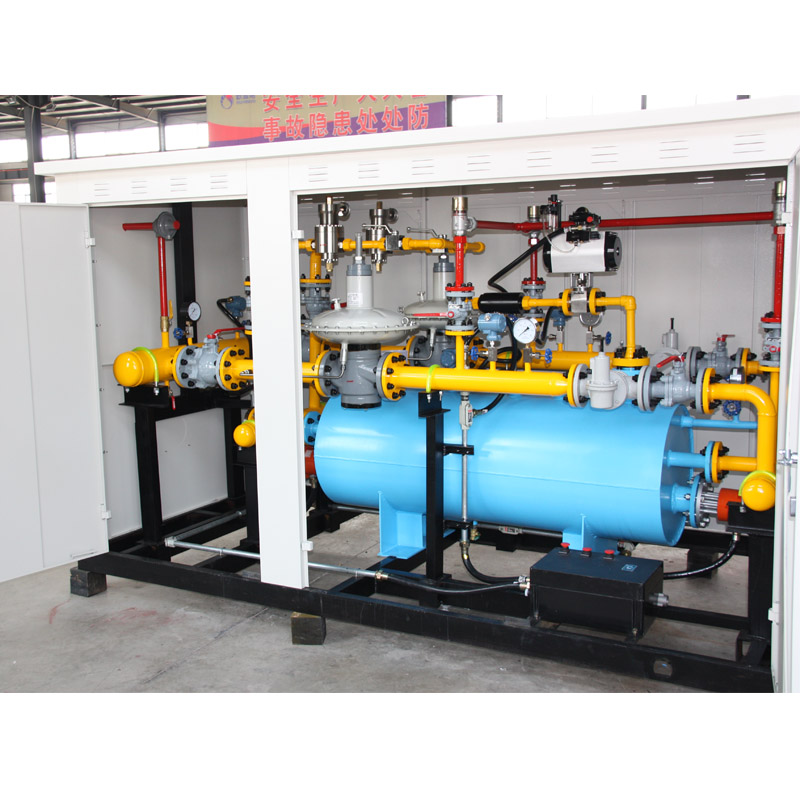
Sep . 28, 2024 13:31
Back to list
Pressure Management Skid System for Optimized gas Regulation Efficiency and Safety Solutions
Understanding Pressure Regulating Skids A Comprehensive Overview
In the realm of industrial processes, maintaining the right pressure levels is crucial for ensuring optimal performance and safety. This is where pressure regulating skids come into play. Designed to control and manage pressure within a system, these engineered assemblies play a vital role in various applications, from oil and gas to water treatment and beyond.
What is a Pressure Regulating Skid?
A pressure regulating skid is a modular, prefabricated unit that combines various components necessary for pressure regulation in a single, convenient package. Typically mounted on a skid or framework, these systems are equipped with valves, gauges, regulators, and other essential instrumentation. Their primary function is to provide a stable outlet pressure from a fluctuating inlet pressure source, ensuring that the downstream systems operate within specified parameters.
Key Components of a Pressure Regulating Skid
1. Pressure Regulators These devices are the heart of the skid, maintaining the desired outlet pressure by automatically adjusting the flow of incoming fluid or gas based on preset criteria. They act as control valves, responding to changes in demand or supply conditions.
2. Flow Meters Essential for monitoring flow rates, flow meters provide real-time data that enable operators to assess system performance. This information is critical for maintaining efficiency and can help in taking corrective actions quickly if deviations occur.
3. Safety Valves Safety is paramount in any industrial operation. Safety valves safeguard the system from overpressure situations by venting excess pressure, thereby preventing potential damage or hazardous conditions.
5. Actuators and Control Systems In many modern skids, automated control systems manage the operation of valves and regulators. These systems can optimize performance based on real-time data, significantly enhancing efficiency.
Applications of Pressure Regulating Skids
pressure regulating skid

Pressure regulating skids are versatile and utilized across various industries. In the oil and gas sector, they are critical for controlling the pressure of gases and liquids during extraction, processing, and transportation. They ensure that pressure levels remain within safe limits, thus enhancing operational safety and equipment longevity.
In water treatment facilities, these skids manage water pressure to ensure effective filtration and distribution. By stabilizing pressure levels, they help maintain the quality of treated water and ensure that it reaches consumers at the required pressure.
Another essential application is in the pharmaceutical industry, where maintaining precise pressure is necessary for various processes, including drug manufacturing and packaging. The stringent requirements of this sector necessitate the use of reliable pressure regulation to prevent contamination and ensure product quality.
Advantages of Using Pressure Regulating Skids
1. Space Efficiency Since all necessary components are integrated into a single skid, these systems are often more space-efficient than traditional setups. This modular design simplifies installation as well.
2. Cost-Effectiveness By prefabricating these units, companies can reduce labor costs and cut down on installation time. The integration of components also minimizes the need for extensive piping and fittings.
3. Enhanced Safety With built-in safety mechanisms and real-time monitoring capabilities, pressure regulating skids can significantly mitigate the risks associated with fluctuating pressure levels.
4. Improved Efficiency Automated systems can optimize pressure regulation based on demand, which leads to energy savings and enhanced operational performance.
Conclusion
Pressure regulating skids are integral components of modern industrial systems, ensuring safe and efficient operation across various applications. Their versatility, combined with innovations in technology, makes them essential for industries that require precise pressure management. As industries continue to evolve and seek more efficient solutions, the role of pressure regulating skids will undoubtedly grow in importance, underscoring their value in the quest for operational excellence.
Next:
Latest news
-
Safety Valve Spring-Loaded Design Overpressure ProtectionNewsJul.25,2025
-
Precision Voltage Regulator AC5 Accuracy Grade PerformanceNewsJul.25,2025
-
Natural Gas Pressure Regulating Skid Industrial Pipeline ApplicationsNewsJul.25,2025
-
Natural Gas Filter Stainless Steel Mesh Element DesignNewsJul.25,2025
-
Gas Pressure Regulator Valve Direct-Acting Spring-Loaded DesignNewsJul.25,2025
-
Decompression Equipment Multi-Stage Heat Exchange System DesignNewsJul.25,2025

